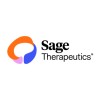
Effectiveness of Combined Levetiracetam and Midazolam in Generalized Convulsive Status Epilepticus...
Status EpilepticusGeneralized Convulsive Status Epilepticus4 moreGeneralized status epilepticus is a common pediatric neurological emergency with significant mortality and morbidity. Benzodiazepines remain the first anticonvulsive line but benzo-diazepines don't control seizures in about 30% of cases. GCSE may be more rapidly stopped and controlled through combining another drug with benzodiazepines such as Levetiracetam, acting by different pathways. This study aims to evaluate the effectiveness of combined levetiracetam and midazolam in treatment of generalized convulsive status epilepticus in children.

Efficacy and Safety Study Comparing Lorazepam and Diazepam for Children in the Emergency Department...
Status EpilepticusChildren with seizures are frequently seen in the emergency department. The drug lorazepam, which is commonly used, is not labeled by the US Food and Drug Administration for children for this use. The FDA, under the Best Pharmaceuticals for Children Act, has requested that a study comparing diazepam, a drug that is labeled by the FDA for this indication, with lorazepam be performed. The study will show whether one drug is more effective and safe than the other.

Lorazepam for the Treatment of Status Epilepticus in Children
Status EpilepticusThe purpose of this study is to gather the data to: 1) determine the best dose, and 2) evaluate its effectiveness and safety in stopping seizures. Part 1 is a pharmacokinetic study (study of how much drug is found in the body after it is given through a vein and how fast the body gets rid of the drug).

Phase III Randomized Study of Diazepam Vs Lorazepam Vs Placebo for Prehospital Treatment of Status...
Status EpilepticusOBJECTIVES: I. Compare the efficacy, onset of clinical anticonvulsant activity, and complications of diazepam and lorazepam given intravenously as prehospital therapy to patients in status epilepticus. II. Determine the effect of prehospital therapy on the incidence of status epilepticus at the subsequent emergency department admission. III. Establish whether prehospital therapy alters hospital management of these patients and ultimately affects patient outcome.

Intravenous Ganaxolone as Adjunctive Therapy to Treat Subjects With Status Epilepticus
Status EpilepticusConvulsive Status EPILEPTICUS2 moreThis study will evaluate the effectiveness and safety of an investigational drug, IV ganaxolone, as adjunctive therapy to standard of care to treat subjects with status epilepticus.

Levetiracetam Versus Sodium Valproate in Children With Refractory Generalized Convulsive Status...
Grand Mal Status EpilepticusThis study is a randomized, open label, parallel group,comparing the safety and efficacy of valproate and levetiracetam in patients of age group 1 to 16 years with status epilepticus not responded to phenytoin and benzodiazepines approaching to pediatric emergency , IMS, BHU. The primary outcome measures will be Proportion of children in either group who have Cessation of all clinical seizure within 30 min of drug administration and secondary outcome will be time taken to control seizure (minutes) from the initiation of infusion. Proportion of children in either group who required additional drugs to abort ongoing clinical seizures, rates of adverse events (hypotension, bradycardia, respiratory depression, PICU stay, in hospital mortality) in the two groups were measured. Refractory status epilepticus condition is major pediatric neurological emergency with high mortality and morbidity. Till now, the treatment guidelines for it are based primarily on retrospective studies with very few randomized studies. There is lack of sufficient data to recommend one drug over another for treatment of refractory status epilepticus.

VIGAB-BIOSTAT: Neuronal Injury Panel Substudy
Status EpilepticusCardiac Arrest With Successful ResuscitationThe purpose of this substudy is to collect and analyze control data to characterize the degree of neuronal injury in PASE patients who have not received vigabatrin to later compare with patients who received this therapy and expand data on the utility of the neuronal injury panel for neuroprognostication. Data from this cohort will be compared with the data generated by the treatment cohort in the main VIGAB-STAT study.

Efficacy of Phenytoin vs Levetiracetam in Status Epilepticus at Institute of Child Health,Faisalabad...
Status EpilepticusStatus epilepticus is the second most common neurologic emergency in children. Morbidity and mortality are considerable; thus, timely termination of convulsive status epilepticus is the primary goal of management to avoid these risks Our objective was to compare the efficacy of phenytoin and Levetiracetam in status epilepticus in children. This study was done in the pediatric emergency department of Children Hospital Faisalabad. A total of 70 patients were randomly allocated to one of the groups by a computer-generated random number table according to their admission in an emergency. Children in group A were given levetiracetam. Children in group B were given I/V phenytoin. For both groups if seizures recurred after the first loading dose an additional 10mg/kg of the same drug was given over 10 minutes. The patients were monitored to see whether there was any recurrence of seizure activity in the subsequent 24 hours. Seizure control was defined as the absence of seizure within 24 hours after the initial loading of the drug.

Study to Evaluate SAGE-547 Injection as Adjunctive Therapy for the Treatment of Super-Refractory...
Super-refractory Status EpilepticusThe purpose of this study is to evaluate the safety and tolerability of SAGE-547 in participants in super-refractory status epilepticus (SRSE).

TELSTAR: Treatment of ELectroencephalographic STatus Epilepticus After Cardiopulmonary Resuscitation...
Cardiac ArrestAnoxic Encephalopathy1 moreThe purpose of this study is to estimate the effect of medical treatment of electro-encephalographic status epilepticus on neurological outcome of patients with postanoxic encephalopathy after cardiac arrest.
